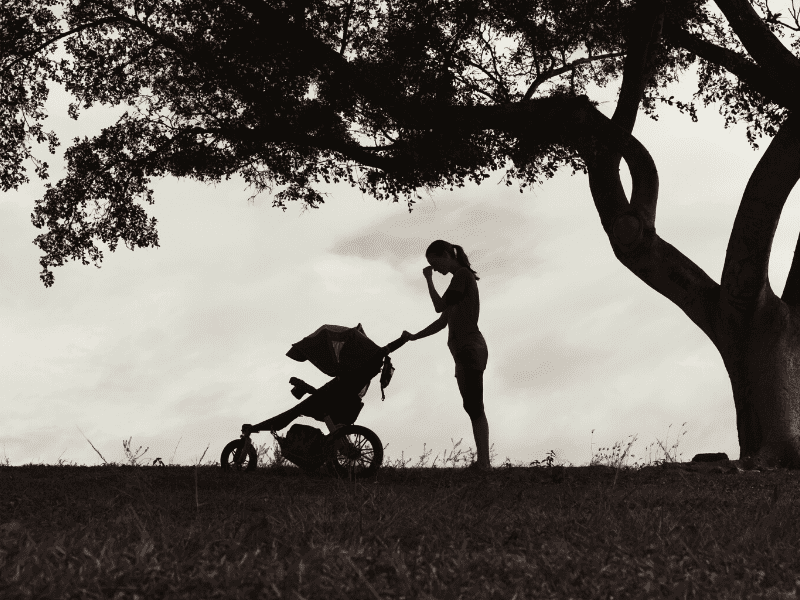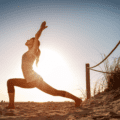How I Knew I Had PPD: A Mom’s Real Life Experience
I recently shared my journey with postpartum depression on my Instagram, and I had multiple questions from moms. Later, I realized I never talked about how I knew I had PPD, which is the first steps that moms need to make to get the help needed.
If you’re like me, figuring out that I had PPD was just as hard as accepting that I needed to get help. Doctors tell us that baby blues is normal, and we know that hormones cause a lot of problems. The dramatic hormonal drop that takes place after childbirth is why we feel weepy and like a bundle of emotions.
Hormones are responsible for a lot of our feelings in the early weeks after childbirth.
The problem is, how do we know when baby blues are no longer that and have turned into PPD? The sooner we recognize the signs, the sooner mothers can seek help. Those days and weeks make a huge difference in the severity of postpartum depression and the effects it has on our lives.
Here’s how I knew I had PPD.
Postpartum Rage is How I Knew I Had PPD

I’m not a normally angry person; I try to go with the flow and take things in stride. Yes, I get angry and yell sometimes – find me someone who doesn’t! – but I never experienced rage until I had postpartum depression.
I expected PPD to look like sadness, feeling withdrawn, no longer feeling happy doing things I enjoy, and the other common signs. While I had those, nothing compared to the rage I felt. My anger went from 0 to 100 in a second.
I screamed at my kids. I turned beat red and yelled at the top of my lungs. Sometimes, I thought my head would explode from anger and yelling.
Then, later, I felt such intense guilt because I yelled so hard at my kids. They didn’t deserve that treatment; they were young and had no idea what was happening with their once-happy mother.
That guilt brought feelings of suicide. At times, I thought my kids deserved a better mom. They deserved a mom who wouldn’t scream at them and make them cry. They deserved a mother who understood like I used to understand.
Now that I’m going through treatment for my PPD, I see how the symptoms are a dangerous cycle that continues to spiral until they become too severe. However, while you’re in the middle of it, it’s hard to see what’s really happening, and that’s because…
Postpartum depression looks different for every mother.
Common Postpartum Depression Signs
According to the Mayo Clinic, some of the most common postpartum depression signs are:
- Severe mood swings
- Excessive crying
- Trouble bonding with your baby
- Feeling withdrawn from friends and family
- Loss of appetite
- Trouble sleeping
- Sleeping too much
- Intense anger
- Feeling irritable
- Hopelessness
- Severe anxiety and panic attacks
- Trouble concentrating
- Thoughts of harming yourself or your baby
The problem with lists like this is that you might only have one of the signs, leading you to think that you just feel off or don’t have postpartum depression. You don’t have to have half of the list to classify as having PPD; you simply need to feel different, depressed, unhappy, or more anxious than you did before you had your baby.
It’s even harder to figure out that you have postpartum depression vs. baby blues when you look at those signs. Signs of baby blues include:
- Mood swings
- Anxiety
- Crying
- Irritability
- Feeling overwhelmed
- Trouble concentrating
- Trouble sleeping
- Appetite problems
See how these signs overlap? It’s easy to think that your anxiety is because you have the baby blues or that you feel overwhelmed because your hormones are off after having a baby. Plus, having a baby is enough to make anyone feel overwhelmed. Add in breastfeeding and juggling other kids – feeling overwhelmed seems normal, right?
How are moms supposed to know the difference?
PPD Differs for All Moms
After opening up about my experiences with postpartum depression, I realized that moms all experience PPD differently.
One of my friends told me her experience centered around anxiety. She felt more anxious than ever before and always felt overwhelmed. She had racing thoughts and trouble concentrating on daily, regular tasks. Working became a serious chore for her.
My neighbor told me that she felt like she never wanted to get out of bed, and she felt distant from her baby. She no longer felt happy hanging out with her husband and watching movies with their other kids; these are things she always enjoyed before. Every day felt like it was never-ending.
One of my Instagram followers reached out to tell me that she too felt intense anger and irritability. Things that never bothered her before suddenly made her blow up. She found herself yelling at her spouse and kids several times each day; that wasn’t like who she was before she had her baby.
This is how I knew I had PPD – I wasn’t who I used to be before I had my baby.
All mothers know that PPD is a risk. Our doctors and midwives discuss the possibility and ask questions during follow-up appointments, but you can develop postpartum depression anytime during the first year after childbirth. Since doctors only see you one week and six (or eight) weeks after childbirth, that leaves a lot of time open for PPD to take over.
Here’s The Big Difference Between Baby Blues and PPD
If you’re stuck wondering whether you have the baby blues or PPD, here are some things to ask yourself.
- Have I had these feelings for longer than three weeks?
- Do I feel different than I did before I had my baby?
- Are these feelings making it hard to take care of myself or my baby?
- Does it seem like these feelings are getting worse than before?
- Do I have trouble completing normal, everyday tasks I had no trouble finishing before?
- Have I had any thoughts of hurting myself or my baby?
if you answer any of these questions with a yes, then you need to talk to your doctor about PPD.
I understand how hard this is and how upsetting it feels, but doctors see this all the time. Between 10-20% of mothers experience PPD, so you’re in great company. After talking with your doctor, you can get started on a treatment plan to start feeling like yourself again.
I’m Glad I Figured It Out
If you read my Instagram post, you know that I contemplated taking my life. I had a history of PPD, and, with the help of my doctor, husband, and family, I received the help I needed to start feeling like myself again. By sharing my story and how I knew I had PPD, I hope someone else sees the signs and seeks help. We are in this together!






Pingback: 20 Self-Care Activities That Busy Moms Will Love
Pingback: Motherhood Burnout: What Is It and How to Survive It